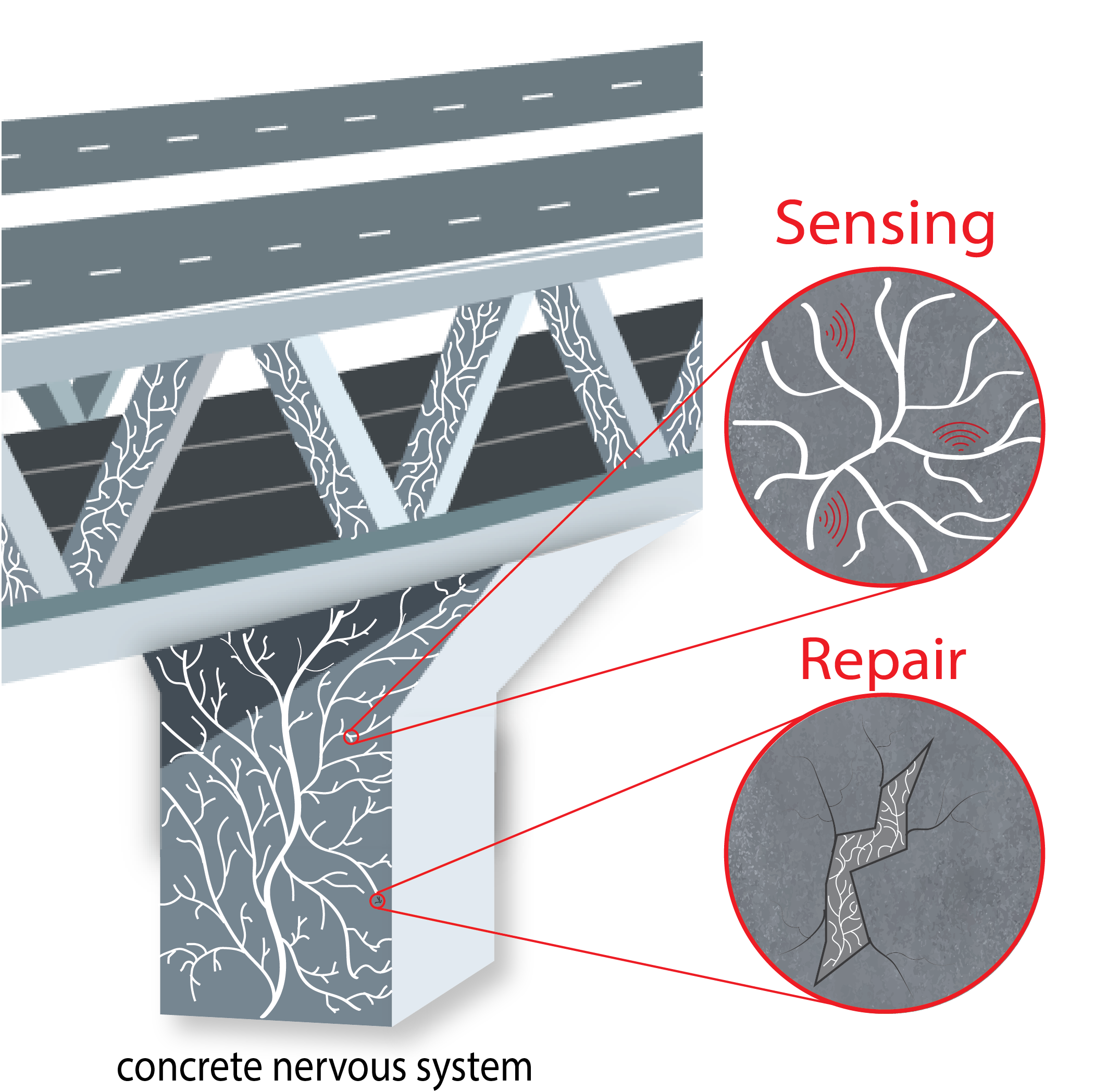Integrating sensing capabilities in concrete structures
Team
Sophia Ganzeboom (ALIVE fellow)
Prof. Dr. Eleni Chatzi, PI
Prof. Dr. Peter Fischer, PI
Bao Zhao (associate member, ETH Zurich)
Internal Collaborators:
Andre Studart, Mark Tibitt, (co-PIs)
Collaborators
Dr. Shreyas Srivatsa (AGH)
Kunal Masania (TU DELFT)

Goal
The central focus of this research project is the development of a novel material system that merges living biomaterials, specifically mycelium, with conventual building material substrates, such as concrete. By integrating mycelium, we aim to enable real-time monitoring of the system’s mechanical and/or possibly chemical properties. To achieve this goal, a comprehensive understanding of mycelium’s electrical properties is necessary. The project aims to deliver such insights and develop methodologies to effectively incorporate mycelium into concrete in three specific ways:
1. Develop a sensing scheme for the mycelium by thoroughly studying and analyzing the electrical properties of the mycelium under various stimuli (mechanical, chemical).
2. Explore techniques for incorporating mycelium into concrete (e.g. via bioreceptive concrete or use of micro-channels). Design appropriate mechanical characterization tests for testing the suitability of the produced composite as a structural material.
3. Create a prototype structural element that benefits from both the self-sensing and self-healing properties of mycelium.
Methodology
Our project involves a comprehensive investigation into the mechanical and electrical properties of mycelium. Initially, we are focused on developing a measurement protocol to examine the electrical signals within mycelium. Simultaneously, we explore how mycelium responds to various stress conditions, such as tension, compression, and bending, in order to comprehend its mechanical properties.
Our research then progresses towards deciphering mycelium's electrical responses and identifying patterns or shifts in its behavior. By developing specialized signal processing tools, we effectively analyze mycelium's resting electrical potential and correlate any changes to external stimuli like loads and environmental conditions.
Lastly, we are investigating the integration of mycelium into concrete materials. This involves formulating a unique "bioreceptive” concrete that can support the growth of mycelium. We modify conventional concrete formulations to create an environment conducive to mycelium's growth. We carefully evaluate the effectiveness of these adaptations through experimental testing. The ultimate goal is to combine the bioreceptive concrete with traditional concrete while maintaining the mechanical properties of the material.
